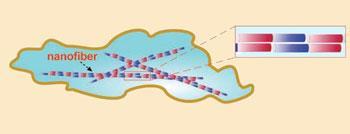Scientists turn bacteria to jelly
Scientists in Hong Kong have shown that creating a gel inside bacterial cells can stunt their growth. This research is a step towards developing novel treatments that would target rapidly-reproducing cells such antibiotic-resistant superbugs.
The research is based on the principle that small amphiphilic molecules (with both hydrophilic and hydrophobic properties) can self-assemble into nanofibres, causing biological fluids to gel. These small molecules are referred to as hydrogelators.
The scientists protected their hydrogelator with a phosphate group, before allowing it to enter E. coli bacteria by diffusion. Once inside, the cells’ own alkaline phosphatase enzymes removed the protecting group, triggering nanofibre formation. These nanofibres form a gel in the cytoplasm, dramatically stressing the cell and inhibiting reproduction.

Bing Xu of the Hong Kong University of Science and Technology, who worked on the project, told Chemistry World: ’I believe that we are stepping in an exciting new direction, but there are many questions yet to be answered. In the future we hope to use the self-assembly of small molecules to kill cancer cells, destroy viruses and parasites or even control the differentiation of stem cells.’
One immediate problem is that high levels of hydrogelators are needed to induce gelling. However, it may be possible to reduce this by encouraging small molecules already present in cells to self-assemble.
Richard Weiss, an expert on self-assembling molecular gels at Georgetown University, Washington DC, commented: ’This is a creative and interesting area of research. At this stage there are issues with delivery, selectivity and specificity but I think that this work will lead to useful therapies in the future.’
Lewis Brindley
References
Z Yang et al, Angew. Chem. Int. Ed., 2007, 46, 1 (DOI 10.1002/anie.200701697)






No comments yet